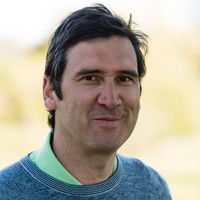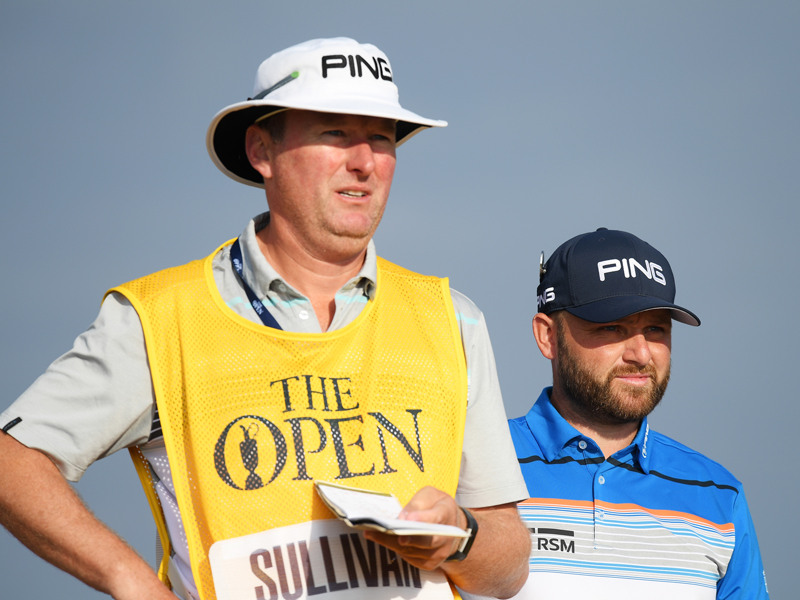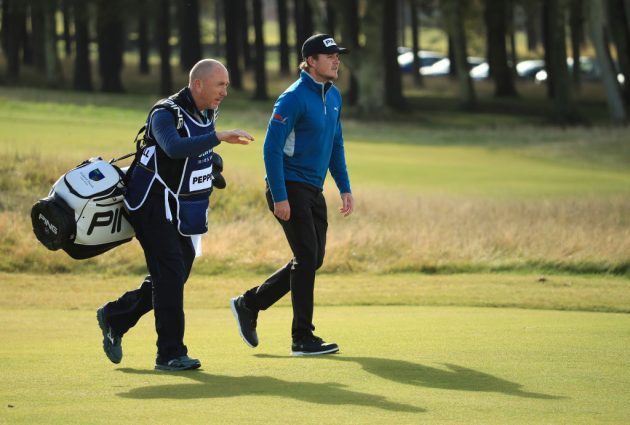'Rangefinders Are 100% Going To Slow Play Down'
We hear from two veteran European Tour caddies after the PGA of America announced it will allow rangefinders in its Majors...


We hear from two veteran European Tour caddies after the PGA of America announced it will allow rangefinders in its Majors...
'Rangefinders Are 100% Going To Slow Play Down'
As from this year rangefinders will be allowed in the PGA of America’s three majors – the organisation says that they are being introduced to help with the ‘flow of play’.
The easy assumption is that the laser will come out, the flag will be zapped and the player will pull the trigger. But the reality is far different.
We spoke to two European Tour caddies to get their take on how this will play out and whether there will be an improvement with the pace of play.
Mick Doran has worked at seven Ryder Cups, has over 30 wins with the likes of Lee Westwood, Justin Rose, Luke Donald and he was the man pulling the flag when Costantino Rocca sent his 60-footer on its way at the 72nd hole in the 1995 Open at St Andrews. These days he is working with Jordan Smith.

Sean McDonagh was with Andy Sullivan at the 2011 Q School and their run lasted eight years and included three wins and the 2016 Ryder Cup.
Subscribe to the Golf Monthly newsletter to stay up to date with all the latest tour news, equipment news, reviews, head-to-heads and buyer’s guides from our team of experienced experts.
In the past couple of years he has worked with Chris Wood, Lucas Bjerregaard and Victor Dubuisson and he’s now on the bag with Paul Waring.
Will rangefinders speed up the pace of play?
McDonagh: I’ve read the statement and I get that it speeds golf up in amateur golf but it is 100 per cent going to slow play down in the professional game. The pin number is obviously quite important but, out of all the numbers, it is probably one of the least important. If you’re playing a links course and the pin is 175 yards away, and the green is rock hard and there is a slope 25 yards short of it, the pin number becomes irrelevant. They will want to know where they need to pitch it to get it to where we want it to finish. The laser isn’t going to tell you that. If you’re pitching it 25 yards short the pro will want to know where that downslope is.
Doran: It’s going to take a lot longer to do stuff if one of you has the laser and one has the yardage book. You try to laser a flag on practice days, and it’s over 180 yards and it’s a bit dull in the morning, and it’s so hard to get that flag. You might have a grandstand behind the green and it’s not as easy as it seems. You will always be double and triple-checking it, it’s much quicker with the yardage book. If you zap a flag three times you might get three different numbers.
When might it come out the bag?
McDonagh: The only time it will speed up play is if your guy hits it way off line and you can zap the flag at 250 yards and then work out what the lay-up is and what yardage you want to leave. The rest of the time it will just slow things down.
Doran: I understand when you’ve hit it in the water, and you want line of sight and you want a yardage to a point, then you will use a laser for a lay-up but I just think it’s going to be quite time-consuming.
What is the process before playing a shot?
Doran: It’s not about zapping the flag, the front number to me is the cover off the bunker, and then is there a slope just short of it, and I’ll want that number. You’re not flying it at the flag to stop it dead. It’s all about course management. When I’m doing the yardages sometimes you’re not even thinking about the flag, and it’s all about where you want it to carry or where to pitch the ball.
McDonagh: The player wants to know three numbers; what’s the cover over a bunker on line, what’s the pin and what’s the back edge. The laser will just tell you one of those and you will always be referring to the book.
Related: The best golf laser rangefinders
Rangefinders obviously help the amateur golfer but does it hinder the way we approach a shot?
McDonagh: I’ve done days with elite amateur squads and they are obsessed with the pin number and not the landing number, they should be more worried about where the next shot will be played from and where the trouble is, amateurs do get obsessed with the flag.
Doran: If you have a scoring club in your hand, like a 9-iron, you’re leaning more towards the flag depending on what’s around it, if you have a 5 you’re looking more at the middle of the green. You need to look at what’s in front of you.
Yardage is just a guide, years ago when we were doing the slope we would do +5 or +8 or whatever and I’ll still do that. But if you have a wedge and the book says +8 for the slope it’s not going to be with a wedge, you’ll go +3.
How often would you get a yardage wrong?
Doran: Not for years and, if I ever did, I’ll soon realise and I’ll catch him before hitting.
McDonagh: Once in 12 years! It happens but very rarely and the player will have a book as well. Again, with the pace of play, you do that when walking to the ball. You always go past a dot or something and you will pace it off so, by the time the bag has gone down, you’ll have agreed on the number.
Can you seen it catching on and rangefinders being in use on the European Tour?
Doran: I just can’t see it happening on the main tours. It just looks so amateurish, you’re always going to have a caddy and it’s going to take so much longer with both a laser and a yardage book as there will be so much double checking.
McDonagh: It’s a bit worrying that it’s a PGA of America decision so it’s been made by professional golfers but I honestly don’t see it catching on. You never know, I think it might be allowed but I don’t think people will use it. I don’t think there will be many opportunities to snap pictures of players and caddies using them. I wouldn’t use one, there might be one in the bag and I’ll use it on the odd occasion but the books are so advanced and you have numbers from wherever you want. You’ll always get the book out to see what the green looks like and where the slopes are.
If it were to come in would that mean sponsorship opportunities for the caddies?
Doran: I was with Bushnell for a year or so but the tour put a stop to it as there were too many of us wearing the hat. They said it conflicted with other sponsorships which didn’t seem to make sense as they are just another brand.
McDonagh: Blanket sponsorship is a tricky one for the caddies. In America they have it with a few companies but Europe doesn’t, it’s something like only so many can wear the same hat so I don’t think it will make a difference here compared to the States.
Related: Rules - Why the PGA of America is allowed to permit rangefinders

Mark has worked in golf for over 20 years having started off his journalistic life at the Press Association and BBC Sport before moving to Sky Sports where he became their golf editor on skysports.com. He then worked at National Club Golfer and Lady Golfer where he was the deputy editor and he has interviewed many of the leading names in the game, both male and female, ghosted columns for the likes of Robert Rock, Charley Hull and Dame Laura Davies, as well as playing the vast majority of our Top 100 GB&I courses. He loves links golf with a particular love of Royal Dornoch and Kingsbarns. He is now a freelance, also working for the PGA and Robert Rock. Loves tour golf, both men and women and he remains the long-standing owner of an horrific short game. He plays at Moortown with a handicap of 6.